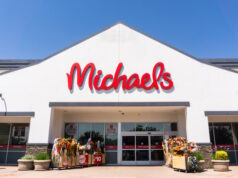
It’s always amazing to us how weather can influence our choice of beverages. Summer heat prompts rosés and sauvignon blancs. Fall calls for zinfandel and Spanish reds. Winter? Big, complex cabernets – or something different, like cognac or port. Today we offer you a diversion from your usual winter fare.
COGNAC

Cognac, representing less than a percent of the world’s spirits consumption, is an afterthought to many of today’s spirits enthusiasts. Maybe cognac shares the same stuffy, vague image that plagues port.
Traditionally, cognac was a solo performer, consumed neat in a glass snifter at the end of a sit-down meal. You probably have seen images of this in vintage movies. Millennials, who don’t appear to cling to tradition as much, strive to craft their own path through life by discarding ritual and convention. They renewed interest has driven cognac sales higher.
Cognac is pretty easy to comprehend. It is essentially made by double distilling a weak, acidic wine (7-9 percent alcohol), made from at least 90 percent ugni blanc (also known as trebbiano), colombard and folle blanche grapes.
The grapes must be sourced from the region surrounding the French village of Cognac. A series of letters codify aging. VS indicates 2 years in wood, VSOP. 4 years in wood and XO signifies 10 years of oak aging. The result when done right is an elegant, smooth spirit with caramel and vanilla scents and flavors with subtle fruit and sometimes-spicy notes that clocks in at about 80 proof.
If you are a fan of American whiskeys or un-peated scotch, cognac should be on your must-try list.
Prices vary wildly with tasty mass-market brands Hennessey and Courvoisier offering VS selections in the low to high $30s. On the other hand, Remy Martin King Louis XIII retails for about $3,500 if you can find it.
We recently tasted four cognacs that represent widely available brands and span the spectrum of aging and styles.
-

Pierre Ferrand Cognac VS 1840 Original Formula 90 proof Pierre Ferrand Cognac VS 1840 Original Formula 90 proof ($44-$49). This spicy, boldly flavored cognac harkens back to the late 1800s when cognac served as a popular cocktail ingredient. Caramel, fruity (orange marmalade) and a hint of licorice notes highlight with a slight alcoholic burn and points to using it as a cocktail ingredient possibly as a substitute rye. So, try it in manhattans, old fashions, or sidecars for a delicious cocktail experience.
- Courvoisier VSOP Cognac 80 proof ($35-$50). Very smooth and elegant in the nose and mouth. Grilled nuts, orange zest and vanilla define this extremely smooth and elegant cognac that stands beautifully by itself.
- Hardy Cognac VSOP Organic 80 proof ($59-$65). A very nice selection for those seeking somewhat rare, organically made spirits. Pear nose and flavors with caramel and a hint of citrus. A bit of a bite in this one.
- Delamain Cognac XO Pale and Dry ($112-$120) 80 proof. The higher cost of this delicious nectar is a reflection of the extra time spent in old oak barrels. Exquisitely smooth and elegant, this cognac is crafted from blending 20- to 25-year-old cognac with no sugar or caramel added, hence the paler color of the liquid. Dried fruit flavors with a bit of vanilla and the barest whiff of licorice come together to create a truly memorable drink.
PORT

Last spring we traveled to New York to participate in a preview of the acclaimed and widely declared 2016 vintage ports scheduled for release in the fall. Fast-forward to this winter and the first-declared port vintage since 2011 is now available in stores. Most of the big brand names such as Dow, Graham and Croft are sporting price tags in the $100 range typical for newly released vintage port. In a departure from historical styles, many of these wines are appealing now. That belies the traditional 10- to 20-year wait required by vintages of yore. Still, most will benefit from decades of aging for those so inclined to enjoying aged port.
If these admittedly hefty price tags are outside of your comfort zone — and you are not inclined to wait 20 years — alternatives exist.
We recently tasted three ready-to-drink releases from Dow and Graham that are much easier on the pocketbook at $25 and $45 for a 750ml bottle.

Graham’s Six Grapes Reserve Porto ($25 -$28) is an industry standard bearer and is made from the same vineyards that produce Graham’s vintage ports. It sports fresh bright cherry and plum notes with a whiff of violets.
The newest in a series of special releases is the Graham’s Six Grapes Reserve Special River Quintas Edition ($42). This wine features a bit more structure and tannin than the regular Six Grapes, but only 1,000 cases have been produced. Plum and cassis notes dominate with more tannin than the standard Six Grapes release.
We were impressed with Dow’s 2012 Late Bottled Vintage Port ($24). 2012 was a drier cooler season than normal and followed the widely declared 2011 vintage. Late bottled vintage ports are held in barrel for an extended period of time to hasten the maturing process and are ready to drink upon release. A bit drier than many ports, this delicious wine offers cherry and cassis notes with a hint of licorice. A great value proposition for port lovers or the curious wine lover.
WINE PICKS
-

Thacher Winery Working Holiday Cass Vineyard Paso Robles Genesco District 2016 Thacher Winery Working Holiday Cass Vineyard Paso Robles Genesco District 2016 ($28). A delicious blend of Southern Rhone varietals, it is 47 percent grenache, 30 percent syrah and 23 percent mourvedre. Dominant nose and flavors of ripe opulent strawberry and blackberry create a very pleasing package.
- Cambria Chardonnay Santa Maria Valley Katherine’s Vineyard 2015 ($22). A textbook ripe chardonnay from a terrific producer, this wine has pineapple and citrus notes with an unctuous round texture in the mouth. Toasty oak is barely discernable. Fantastic!
- Grandes Vinos y Vinedos 3 C Carinena Carinena 2016 ($10-12). The 3 Cs refer to the carinena grape, Carinena region and Carinena village where this lovely red wine hails from. Carinena is otherwise known as carignan in California and France where it is often seen. Carinena is the oldest established appellation in Spain beginning in 1932. This carinena features delicious appealing strawberry and cherry flavors and scents and is somewhat reminiscent of a well-made grenache.
- Jason Stephens Cabernet Sauvignon 2014 ($28). This was a stunning surprise in a flight of prestigious cabernet sauvignons we recently tasted. Stunning because we never heard of the producer – shame on us. The cabernet was dense with youthful dark fruit flavors and a dash of licorice.
Additional Wine reviews on MoreAboutWine
All photos are randomly selected and do not indicate any preferred wine
You can send questions to Tom Marquardt mailto:marq1948@gmail.com[/vc_message]












